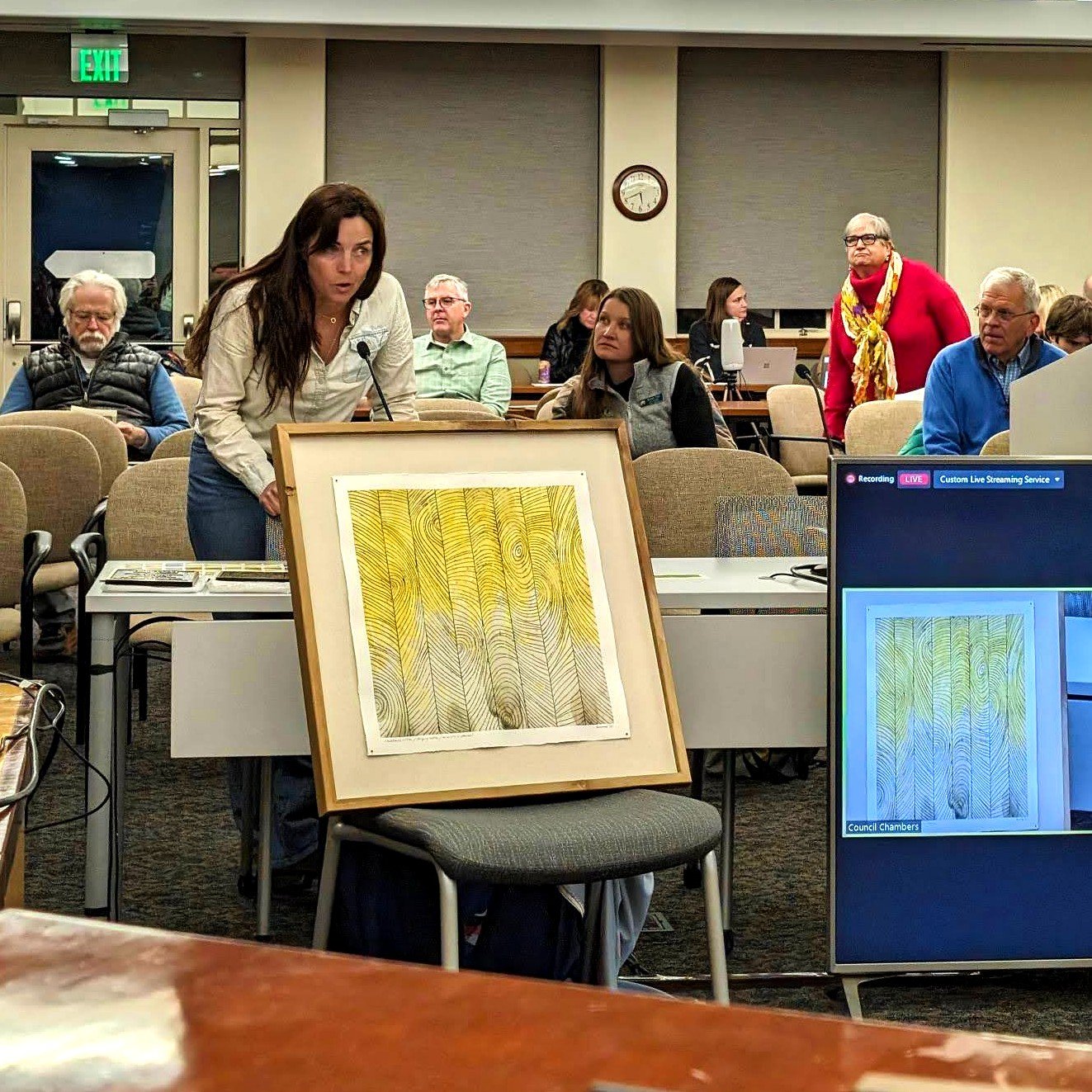
King Con Ore Bin Ink Project.
a site-specific ink making project to celebrate mining infrastructure preservation
During the summer of 2023, I was commissioned by the city of Park City to create a piece of art inspired by the King Con Ore Bin to commemorate its historic preservation. What’s an ore bin you ask? Well, it’s a bin you put ore in of course, and this one, the King Con Ore Bin sits on the side of the Claim Jumper ski run on Park City Mountain Resort. And I spent this whole summer gaining inspiration from this defunct bit of mining history to create a work of art for the 2023 Annual Cindy Matsumoto Historic Preservation Award.
If you know my work from years past, you’ll know that summer is when I’m out foraging and making inks, and this year was no different. Except this time, I went to one location - the King Con Ore Bin (KCOB), and foraged for plants and collected little bits of material to make a whole bunch of living inks (around 20, although some of them didn’t work). I collected flowers, pine cones, mushrooms, lichens, rusty bits of metal, copper wire, plaster, charcoal, and more. The hike out and back to the Ore Bin was around three hours round trip, plus time for foraging, painting, and discovering.
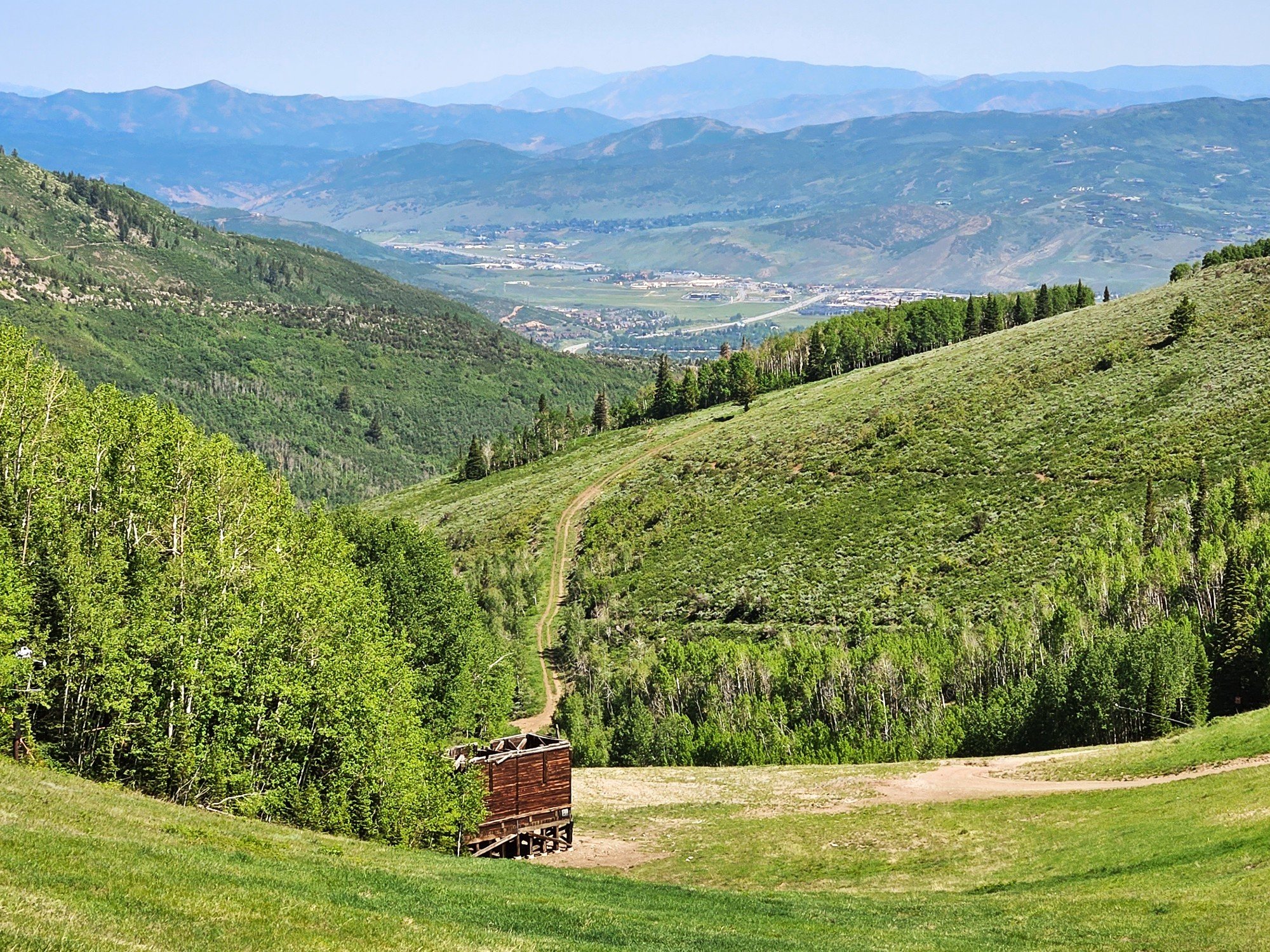
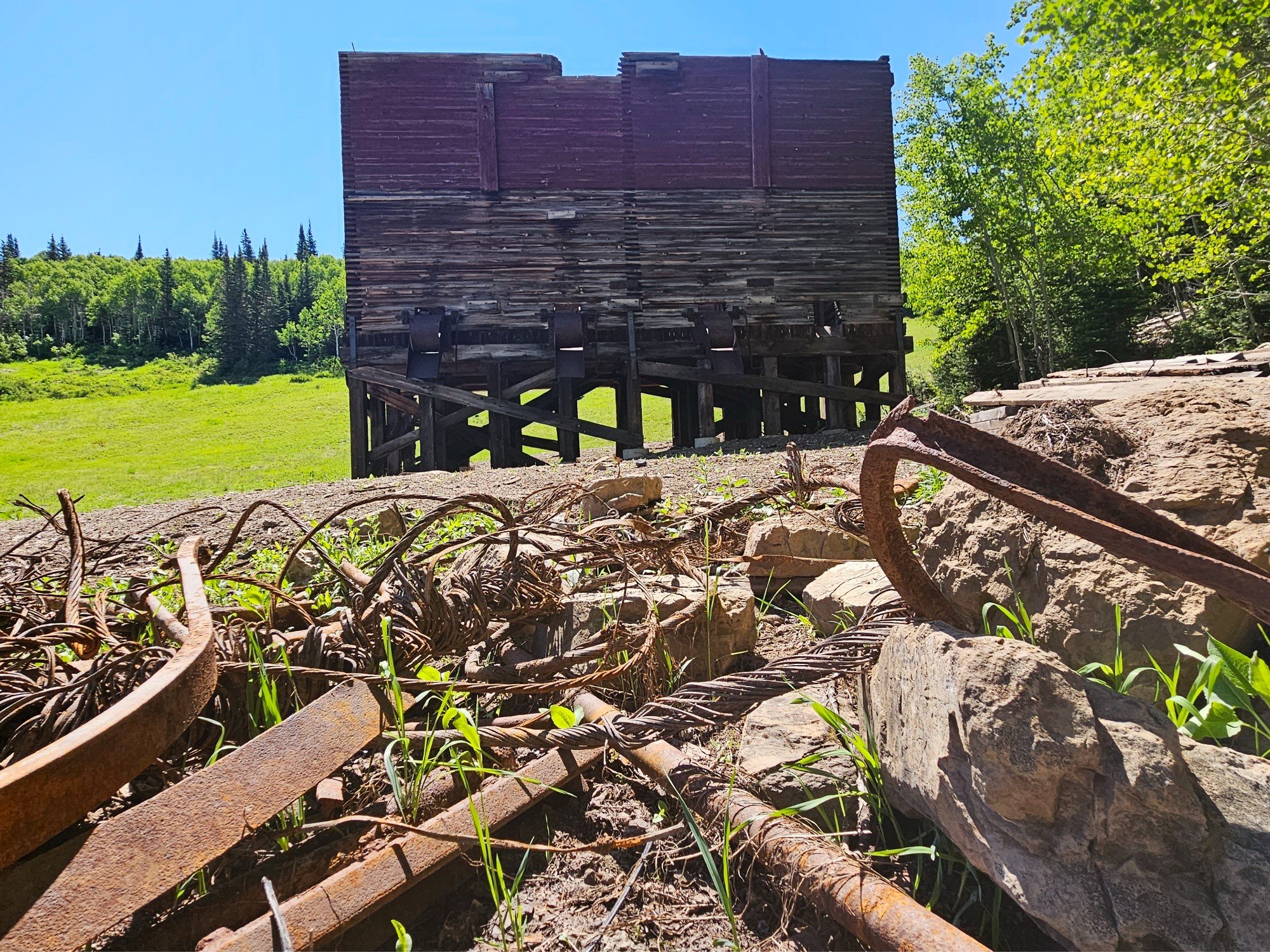
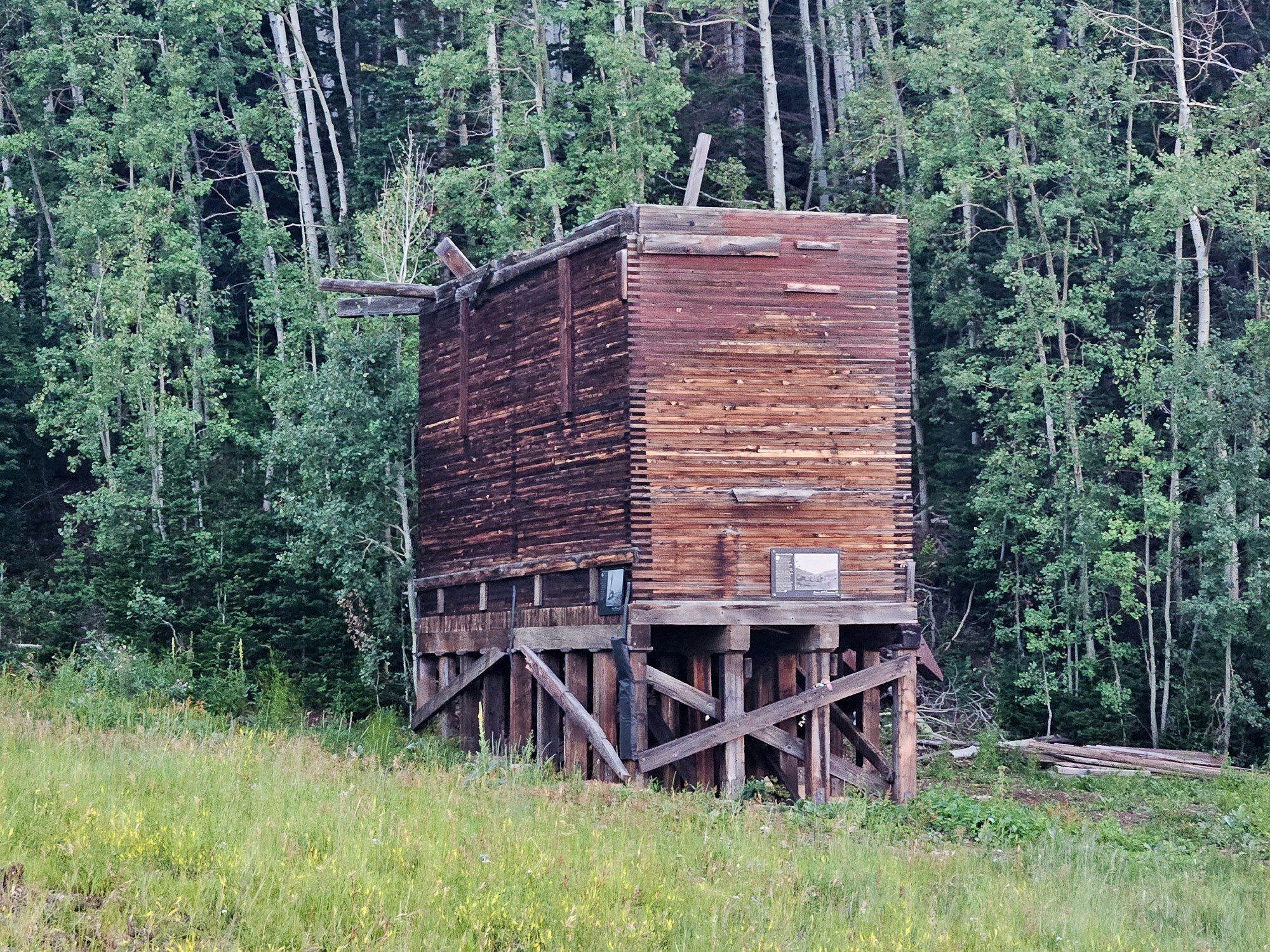
The plan for the art piece:
Forage for plants and materials within view of the KCOB site
Make a collection of living inks from foraged materials
Make a series of paintings from said living inks
Let the awarding committee choose their final painting
Decide what to do with the rest of the paintings
I was hiking out to the site regularly to forage and became a little obsessed with trying to understand what the site was like and where the Ore Bin was actually located. I went to the Park City Museum and worked with Dalton Gackle, the curator/historian to pull up all the pictures they had of the mine and any maps or information they had about the site. Read more about the mine here via Park City Museum (such a great website and resource!).
The KCOB is all that remains now of the fabled King Con Mine Complex, which originally started around 1880 and went through a number of owners and phases before mining in Park City and around the West died out. When the ski industry took over, old overburden (stuff pulled out from the shaft that isn’t wanted) and tailings (stuff left over after wanted ore is removed) were smoothed out to make way for ski runs. For the King Con Mine, all that remains is this bin, and in 2022, Calder Richards Consulting Engineers and Xcavation Company completed the renovation to ensure the bin would remain standing as a reminder of our past.
Potential alignment showing the Silver King Consolidated Mine in the early 1900s versus 2023

View looking West Silver King Consolidated Mine circa early 1900s, courtesy of Park City Museum

View looking South towards Silver King Consolidated Mine circa early 1900s, courtesy of Park City Museum

Silver King Consolidated Mine circa early 1900s, courtesy of Park City Museum

View looking West torwards Silver King Consolidated Mine circa early 1900s, courtesy of Park City Museum

Ore Bins and Trestles at Silver King Consolidated Mine circa early 1900s, courtesy of Park City Museum
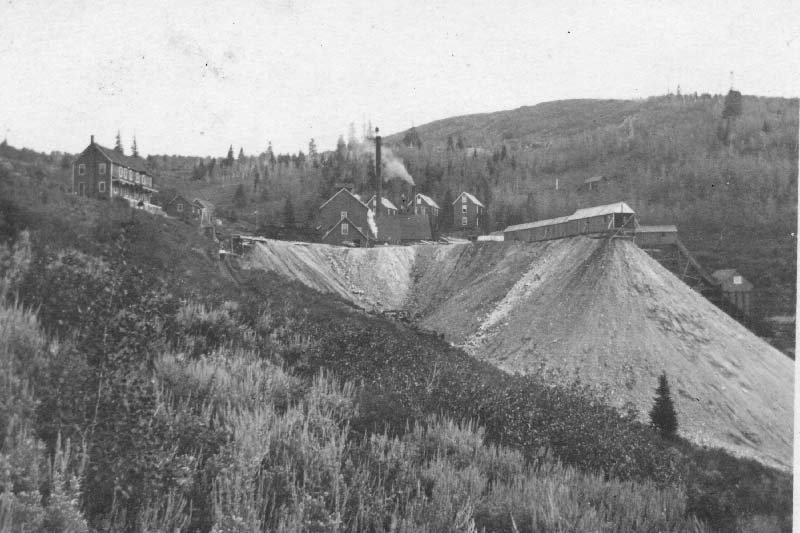
Overburden pile at Silver King Consolidated Mine circa early 1900s, courtesy of Park City Museum

Ore Bins and Trestles at Silver King Consolidated Mine circa early 1900s, courtesy of Park City Museum

Historic Fire Insurance Map of Silver King Consolidated Mine circa early 1940, courtesy of Park City Museum
And because I couldn’t quite figure out where this Ore Bin was in the photos, I contacted the Friends of Ski Mountain Mining History to see if they knew anything, and boy howdy, did they ever. I got a personal tour of the mine site by Sandy Brumley and Melissa Clark, who took me up via ski lift to easily get up to the Ore Bin and we walked around comparing historical photos, aerial tramway alignments, and historic fire maps to see if the bin was in its original place and how it was used. Want to know more about local Park City mining history? Take one of their amazing walking tours.
Sandy even phoned in a friend, a mining expert named Mark Danninger, and between them all, we *think* this bin might have actually been used for coal, not ore (sad), and was probably moved from its original location to make way for the ski run (reasonable). I am so grateful to my mining history experts for sharing their knowledge and their time on this project.
All summer, I was collecting plants and materials, as well as information, and then making the inks. Learning about the history of the place seemed just as important to me as the inks and the art. Smashing around in the woods looking for the remains of the bunkhouse foundations and the water tank seemed somehow critical and just as important as seeing if I could make an ink from Pink Yarrow. And YES! You can find a pale pink Yarrow in the wilds sometimes, which makes a completely different colored ink than the white one. Yellow Yarrow also makes a different colored ink, but there wasn’t any there.
The preservation of the KCOB and the other mine remains are a visible reminder of the collective history of Park City, representing the industry of our mining era and the people who lived it. And it should be noted, that of course miners in Park City were not the first people in this area and we need to acknowledge the presence and history of the local native people, the Shoshone. Surrounding the Ore Bin is a wild and beautiful location filled with flowers, plants, trees, and animals that have maintained their presence throughout the evolution of this town. While the KCOB is no longer active, the area around it is still teeming with life.
Preserving the KCOB is one way of protecting our history, but another way is to create a work of art that celebrates that history of industry and nature. My work creating living inks from foraged plants and matter will be used to preserve the beauty of this site through the colors found there. I love making and working with these handmade living inks, because it’s a way to create art with the help of nature, and also, my favorite, to spend more time outdoors. What began as an experiment 4 years ago has become an obsession with using natural materials to make art.
Each year, I create a new series of paintings using inks I’ve made from nature. It continues to be an exciting new realm for me to see what is possible and share the beauty of the natural world with others. This project with the KCOB is my first site-specific work to collect materials from one single location to create art with. In the past, I have collected materials from many places creating works that are more about color and feeling, but this has provided me an exciting opportunity to explore what I can create from one location.
Throughout the summer, when visiting the Ore Bin site, I would take notes on what I found. My record of what I saw and then foraged is shown below in my sketchbook. To be clear, I did not identify EVERY plant I saw - I am no expert in grasses, and I certainly don’t know the fungus or lichens very well (at all honestly). But it’s an interesting record of what grows there. You’ll notice I made notations for which plants or materials I foraged for and when.
-

Foraging for Material
The first step in making ink is to forage for the material, like this plant called Rabbit Brush, which makes a great yellow ink. I collect the flower head and bring it home with me.
-

Making Ink
The next step is to boil the material in water for awhile to leach out any color. I learned all about making ink from the book “Make Ink” by Jason Logan*.
-

Bottling Ink
After boiling the material, I strain the flower out and retain the leftover liquid. When bottled it typically looks dark and uninteresting, but on paper and with the addition of other modifiers, it transforms.
Ore Bin Ink Palette
To explain. The top row is the name of the plant, the second row is the ink straight out of the jar, and then each following row is the ink modified by adding another element. This is the fun part and where I feel like I am a witch or an alchemist. By adding modifiers, I can change the color. (Modifiers in order down - Milk Paint Base, Vinegar, Baking Soda, Iron, Alum, Copper). In addition to these ink colors, I was also able to collect lots of rusty bits of metal and copper wire to make an iron and copper ink, both of which are wonderful inks on their own, but make amazing modifiers. I can’t tell you how excited I was when I found copper wire on my first site visit! I also collected charcoal and some plaster on site, which I ground into a fine powders to make inks with as well. I just love looking at that palette and seeing all the amazing colors. Also notice above how Pink Yarrow and White Yarrow make completely different colored inks. So cool.

Small practice paintings to test ink colors and mark-making ideas.

An ink painting while drying.

In process of adding encaustic and charcoal

Waiting for inks to dry
Mini Practice Paintings
After the ink dried, I painted encaustic wax directly onto the paper in patterns that either left part of the painting exposed or I etched into the wax to create patterns. From there, I rubbed a charcoal, iron, or plaster ink all over the painting, and anything exposed would soak up that ink. This was the ugly stage, and until I wiped or scraped off the excess, it looked a total mess. But the end result left either delicately etched lines or darker areas that obscured the ink behind. Below is the collection of the 16 smaller test paintings, which will be used for my 2024 art calendar. I adore these little 5x5 paintings. They just make me so happy.
So this new body of work, is directly inspired by last year’s 100 Days of Living Ink, Forest Fire Charcoal and Encaustic project. A continuation on the techniques I learned last year and pushing further to see what I could do still. This year, it was fun to add in iron and plaster to discover how those could be used in the final stage to fill the etchings or cover the areas not protected by the wax.

The Final Paintings
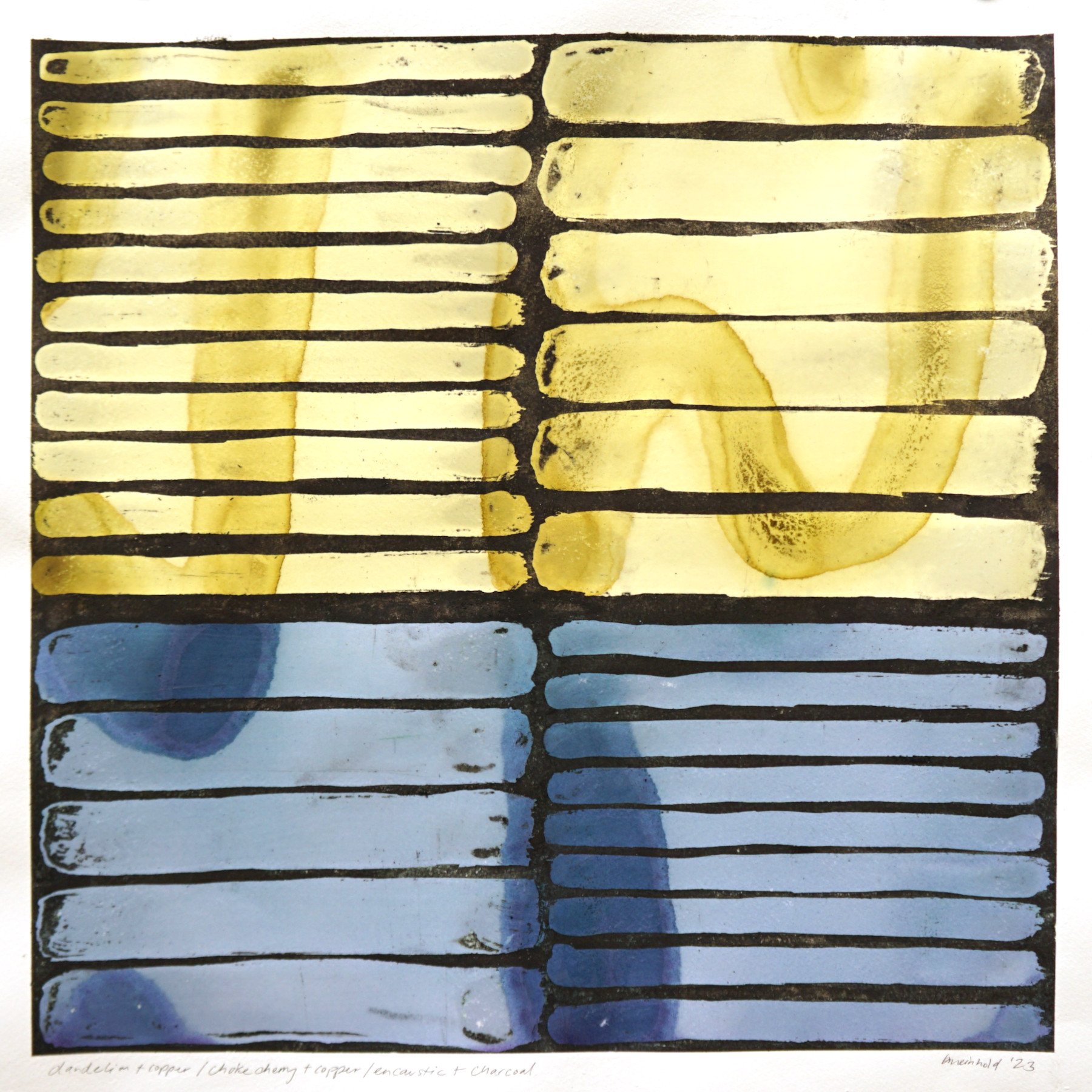
dandelion + copper / chokecherry + copper / encaustic + charcoal
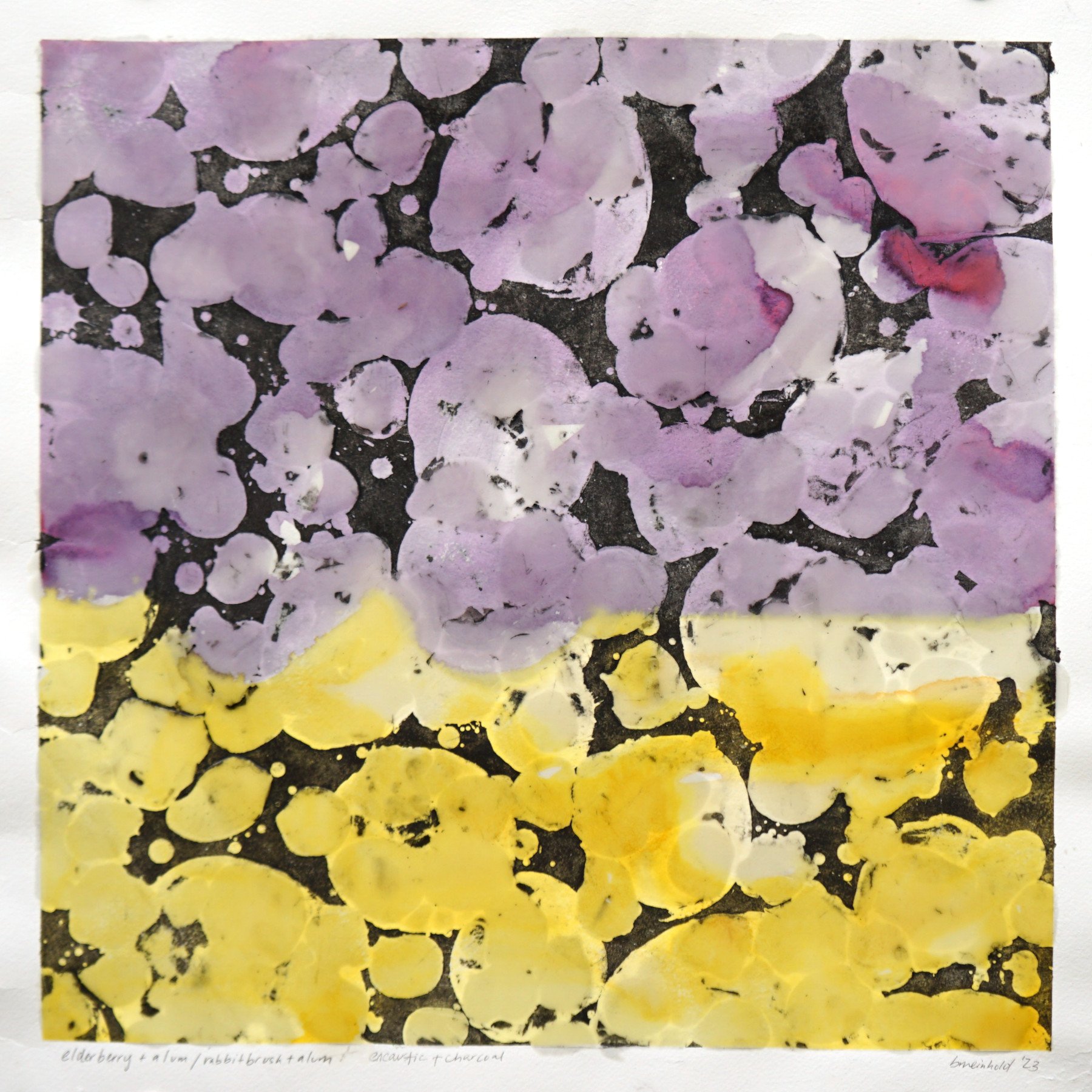
elderberry + alum / rabbitbrush + alum / encaustic + charcoal
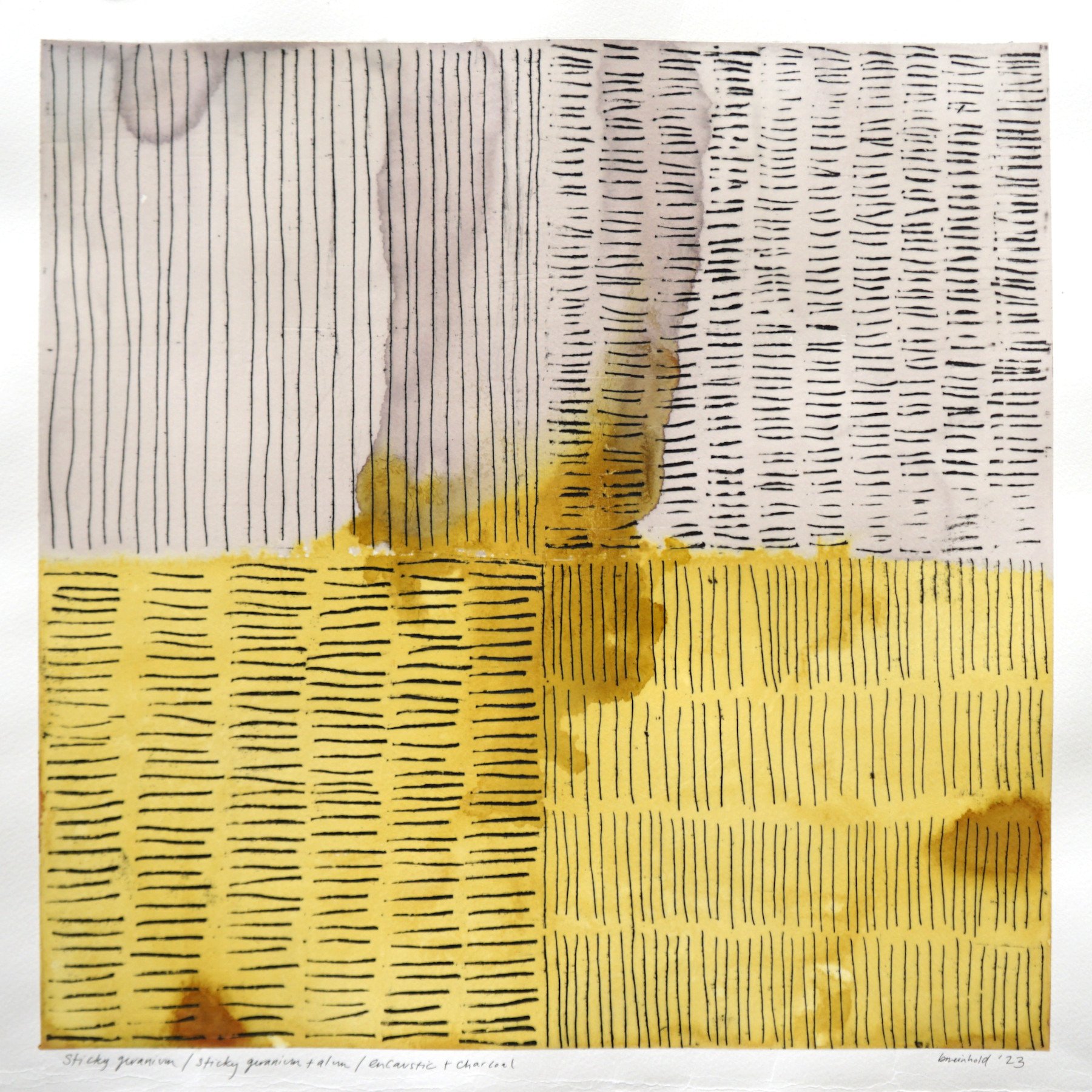
sticky geranium / sticky geranium + alum / encaustic + charcoal
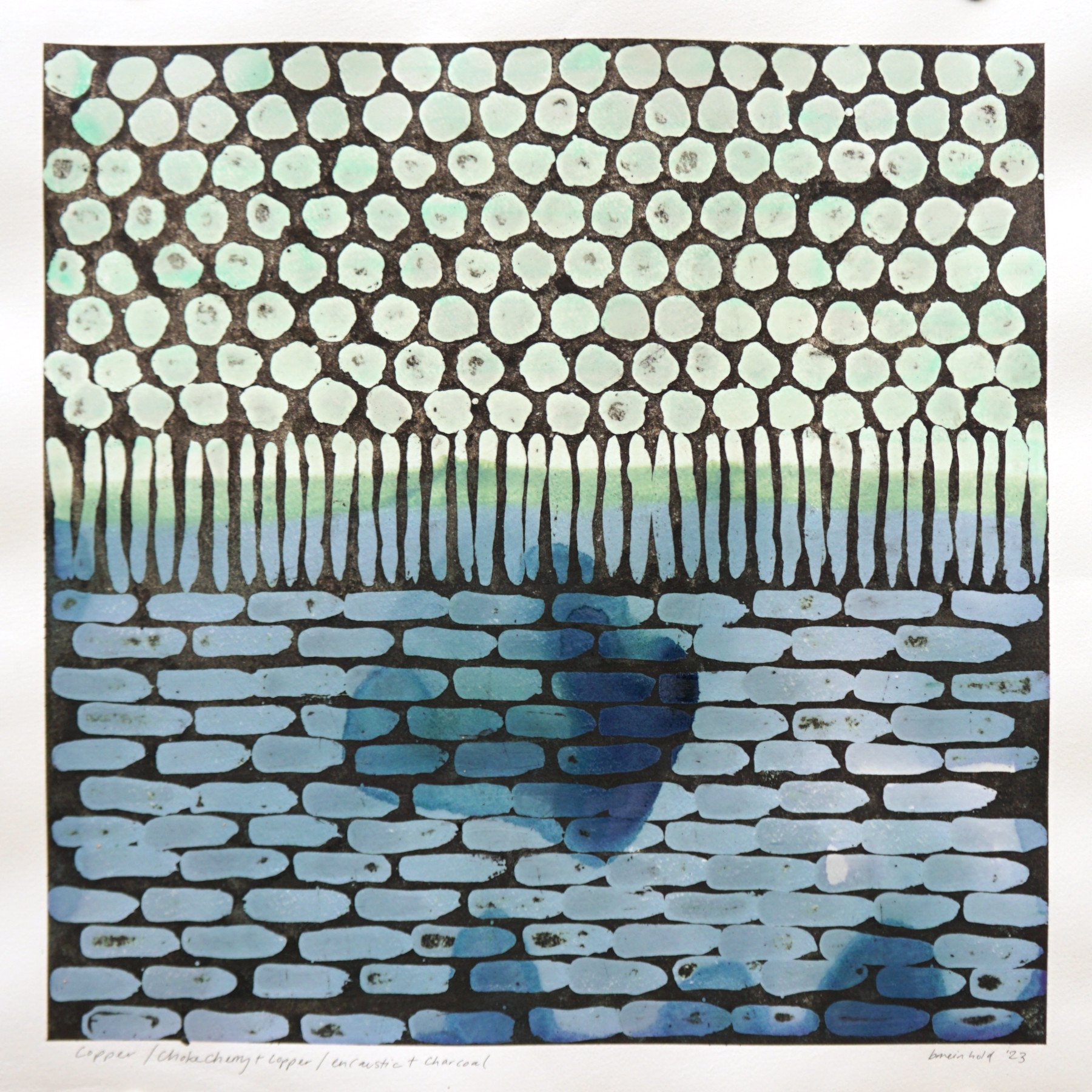
copper / chokecherry + copper / encaustic + charcoal
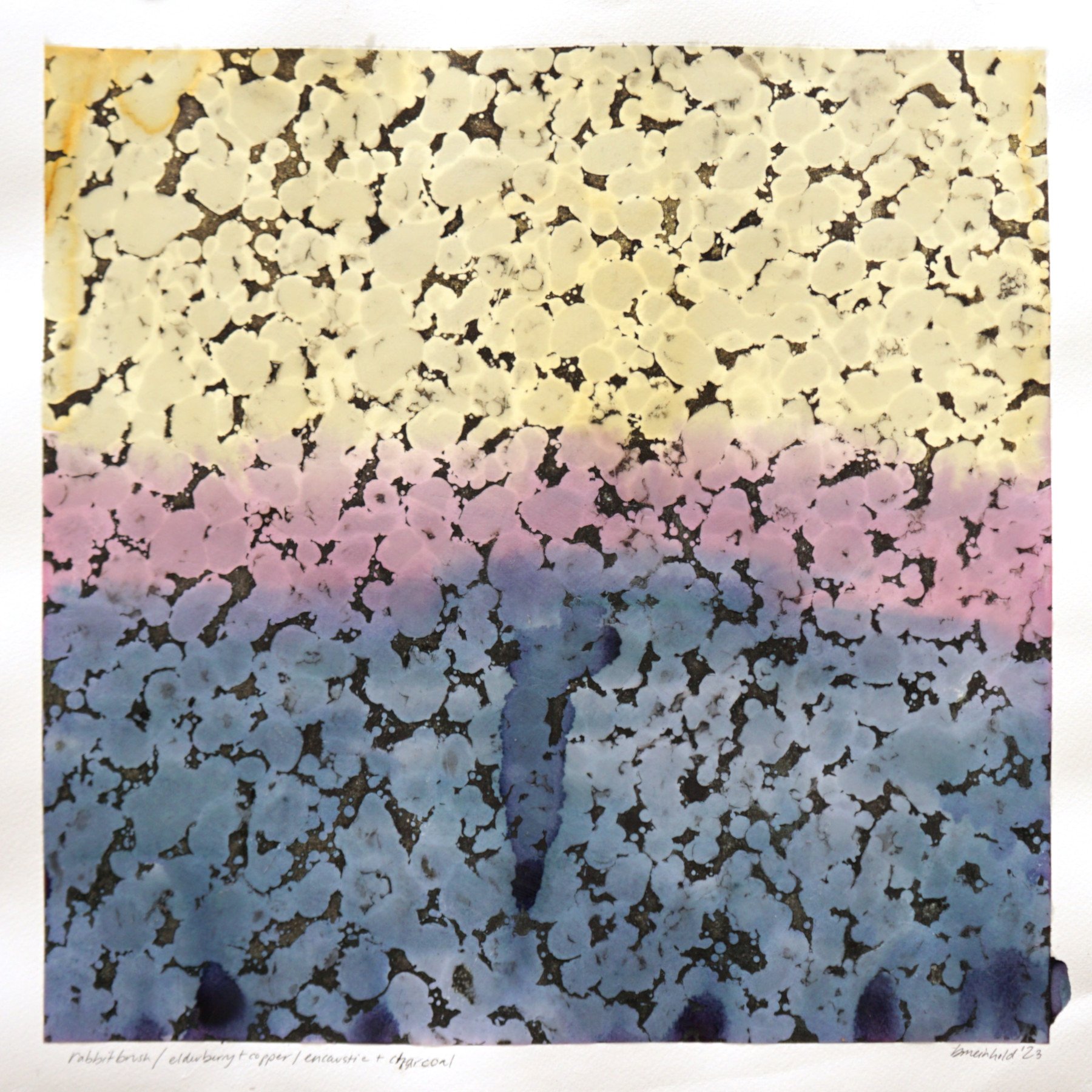
rabbitbrush / elderberry + copper / encaustic + charcoal
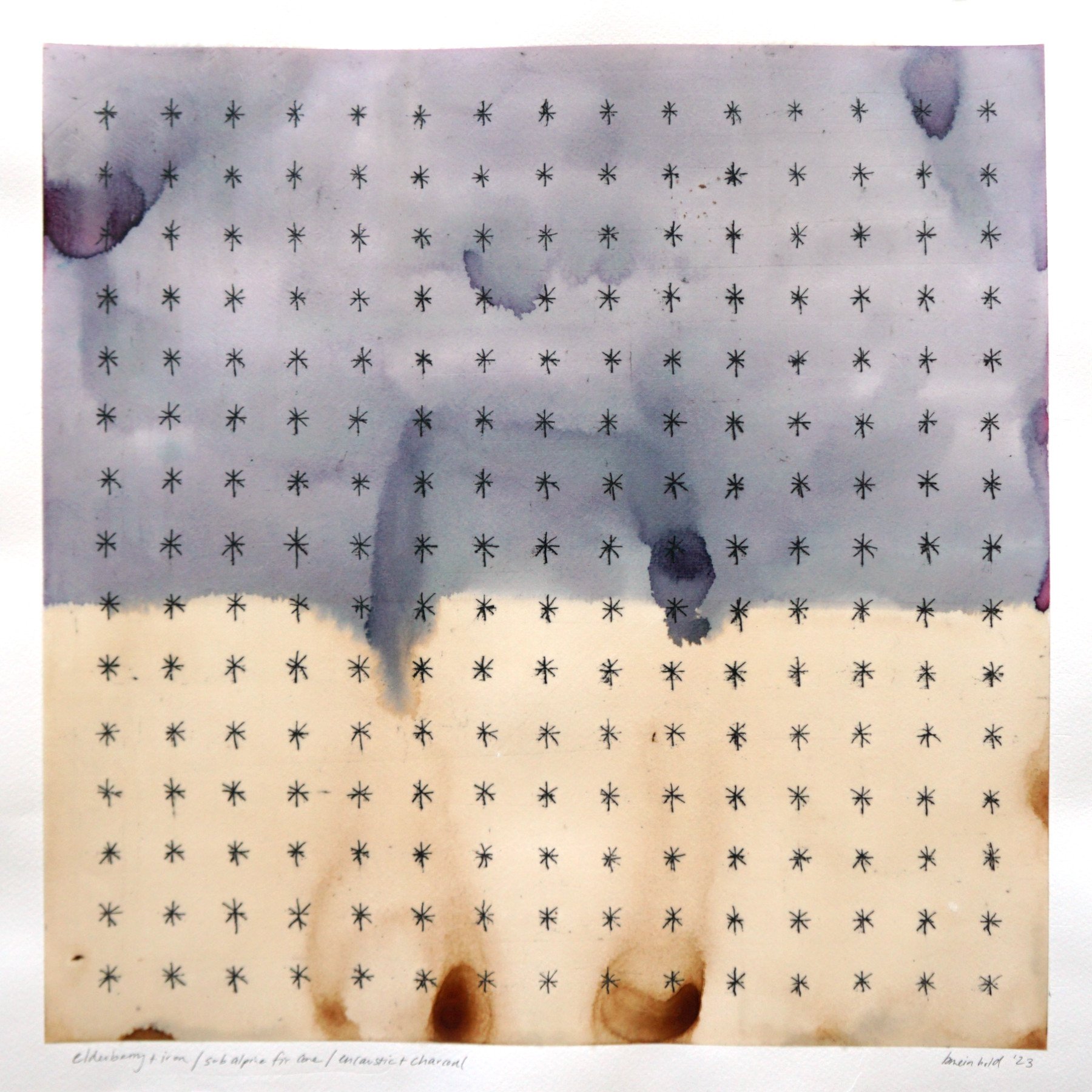
elderberry + iron / subalpine fir / encaustic + charcoal
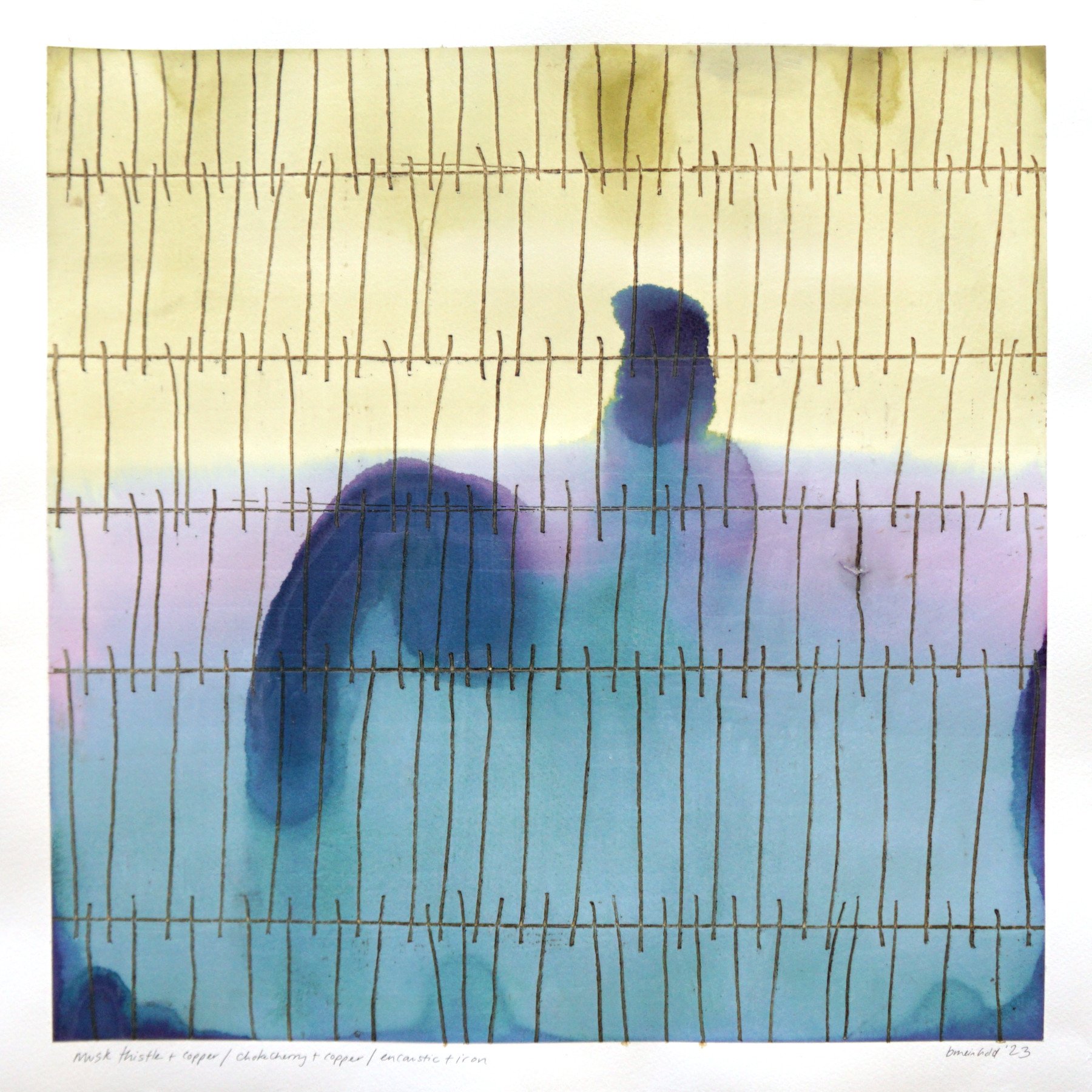
musk thistle + copper / elderberry + copper / encaustic + iron
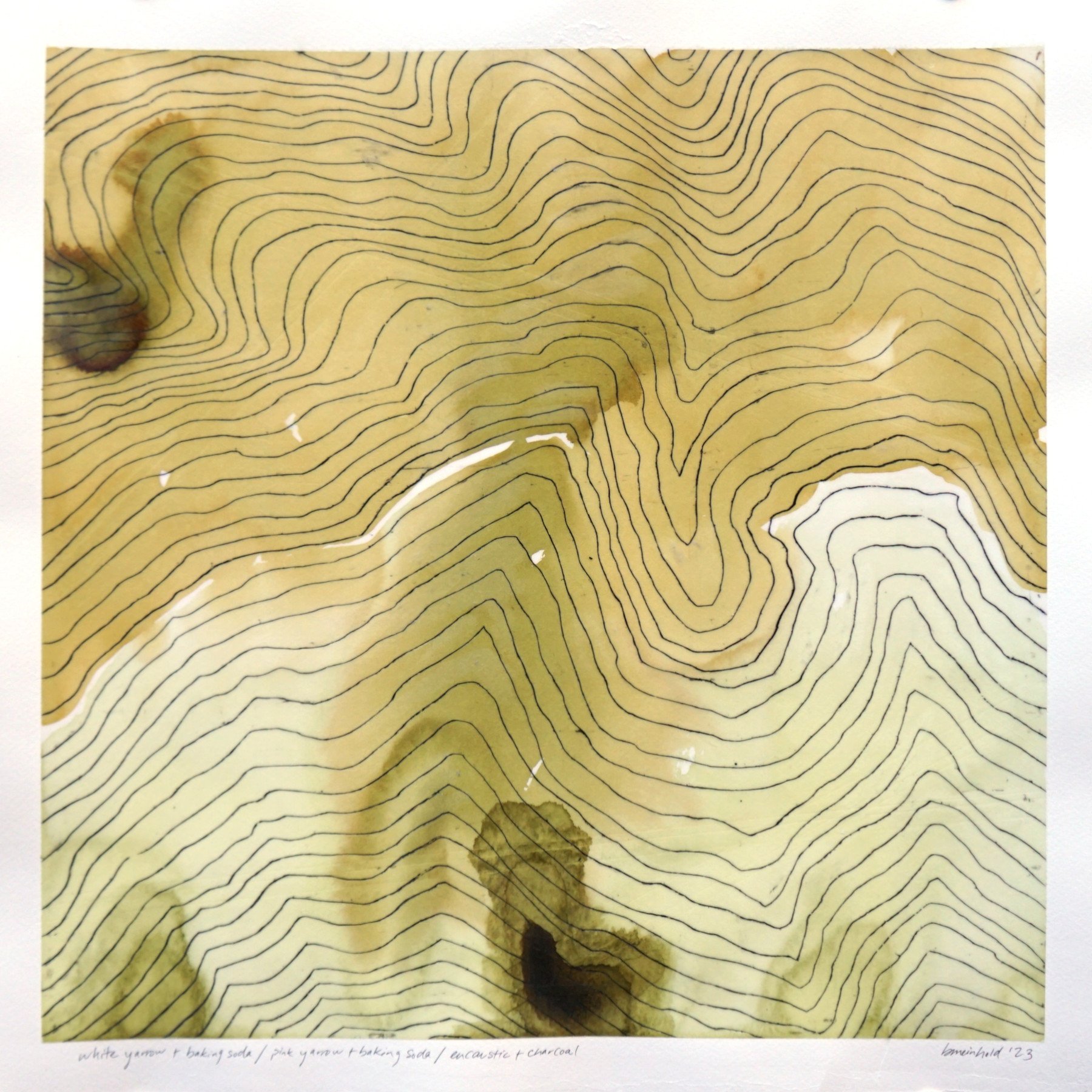
white yarrow + baking soda / pink yarrow + baking soda / encaustic + charcoal
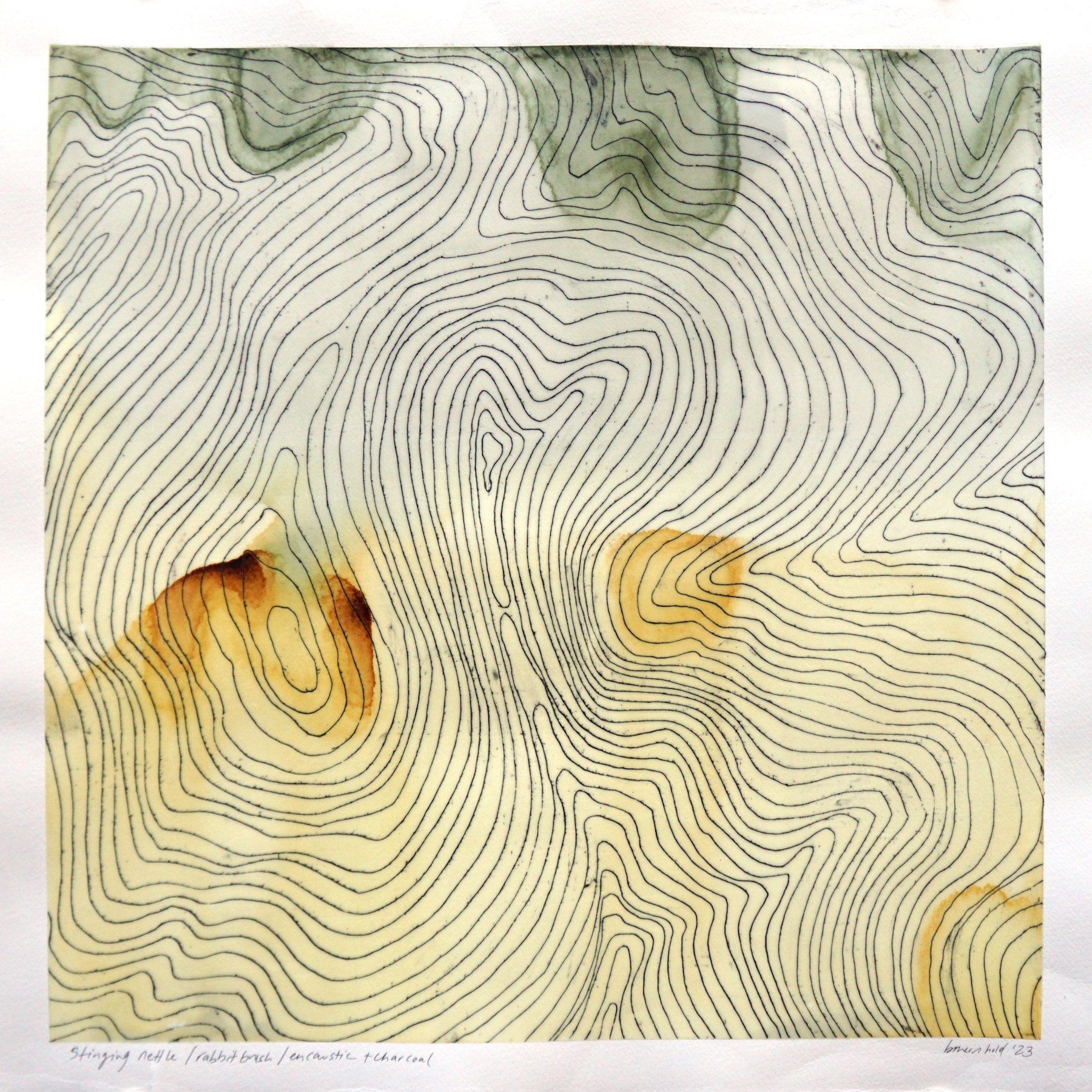
stinging nettle / rabbitbrush / encaustic + charcoal
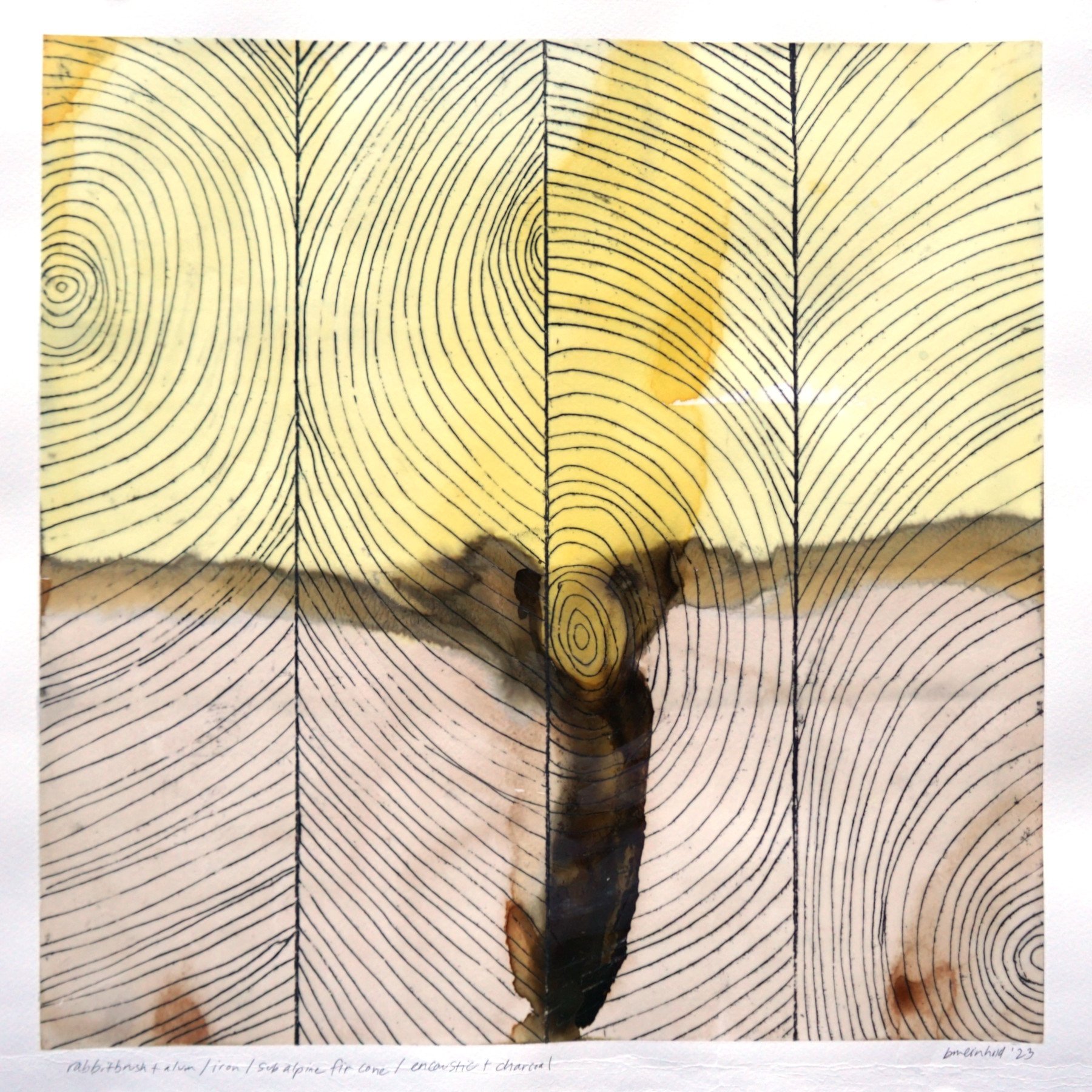
rabbitbrush + alum / iron / subalpine fir / encaustic + charcoal

stinging nettle / rabbitbrush + alum / chokecherry + alum + copper/ encaustic + charcoal

musk thistle + copper / elderberry + alum / encaustic + charcoal

dandelion + copper / chokecherry / encaustic + charcoal

pink yarrow / chokecherry + alum / encaustic + iron
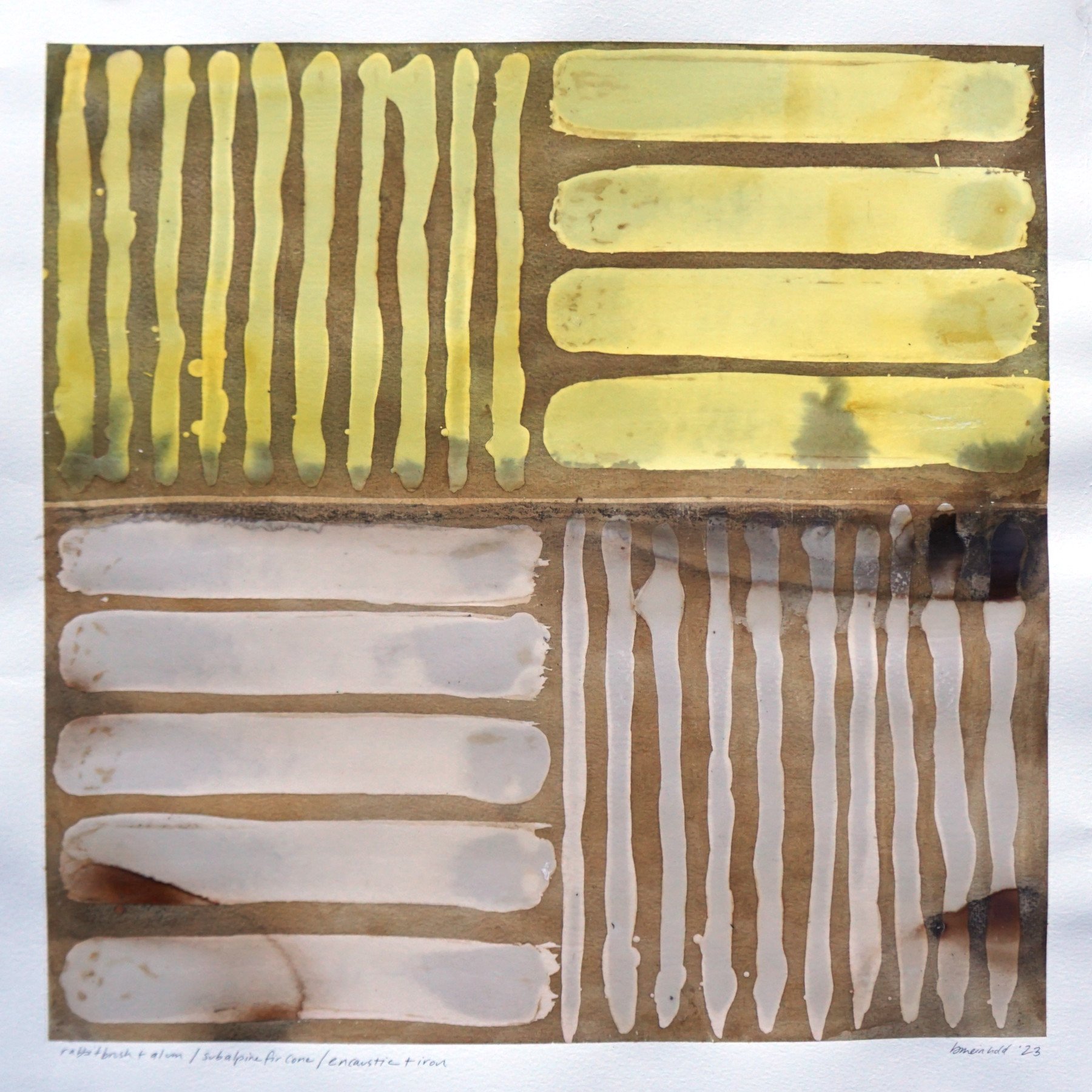
rabbitbrush + alum / subalpine fir / encaustic + iron
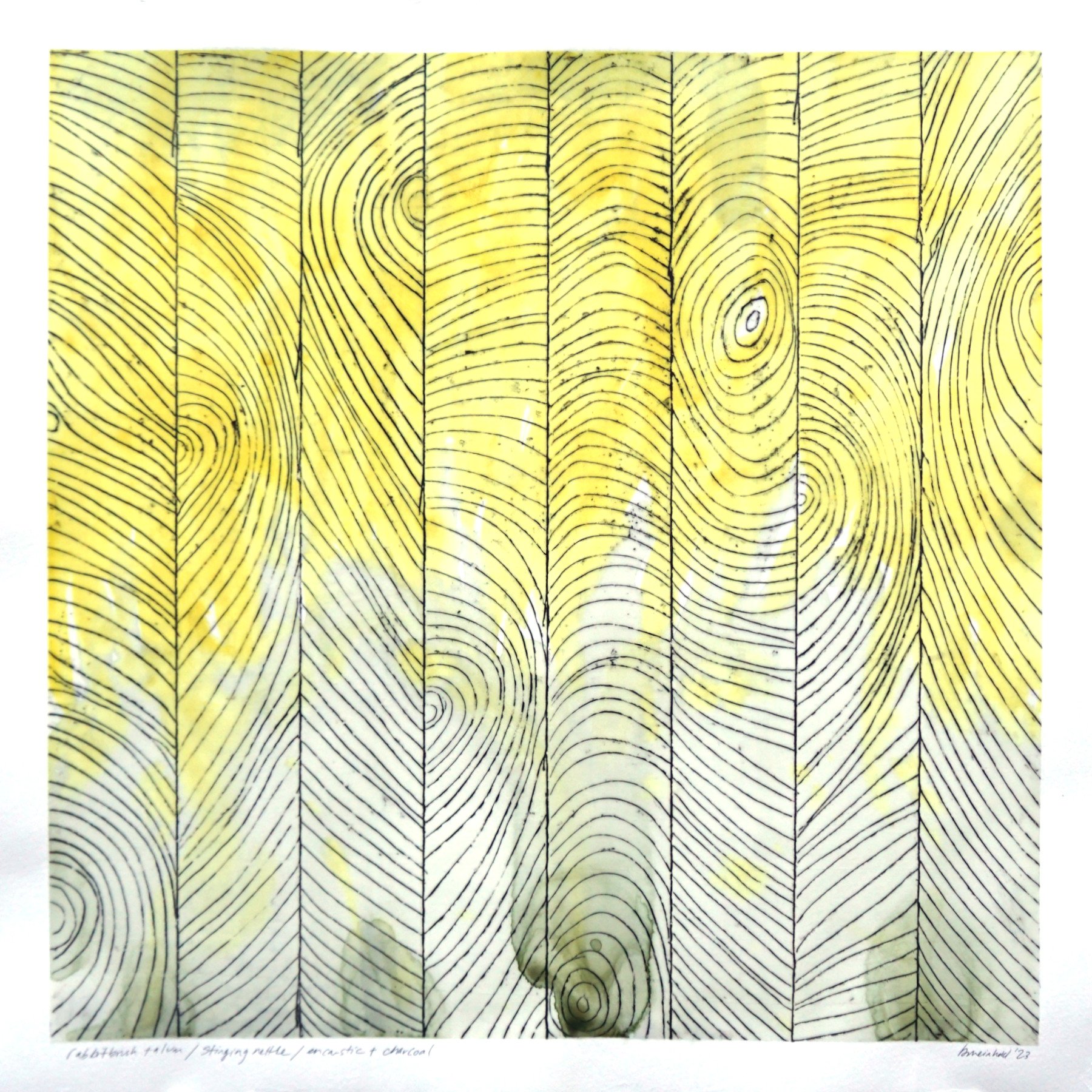
rabbitbrush + alum / stinging nettle / encaustic + charcoal

subalpine fir / chokecherry + iron / encaustic + iron
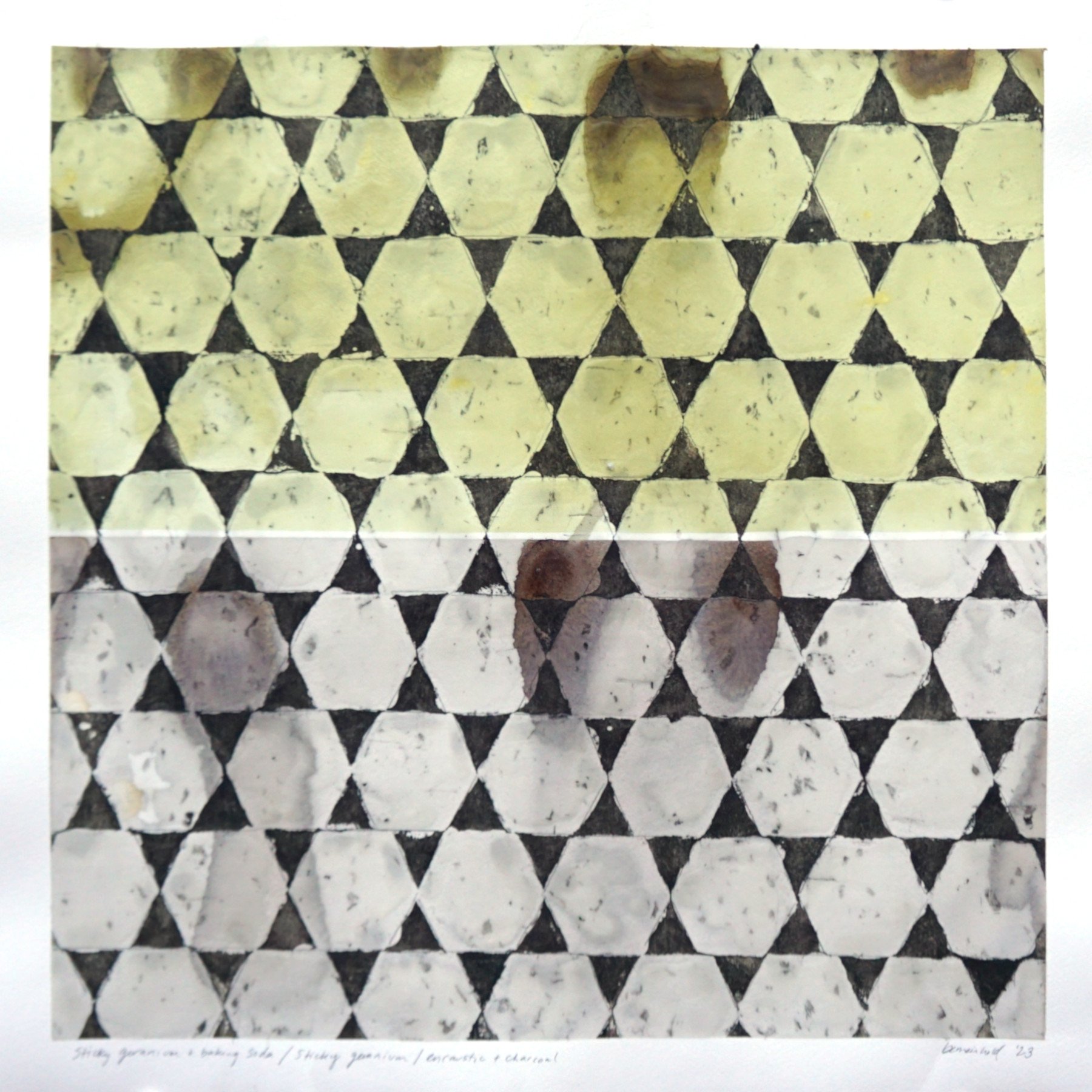
sticky geranium + baking soda / stick geranium / encaustic + charcoal
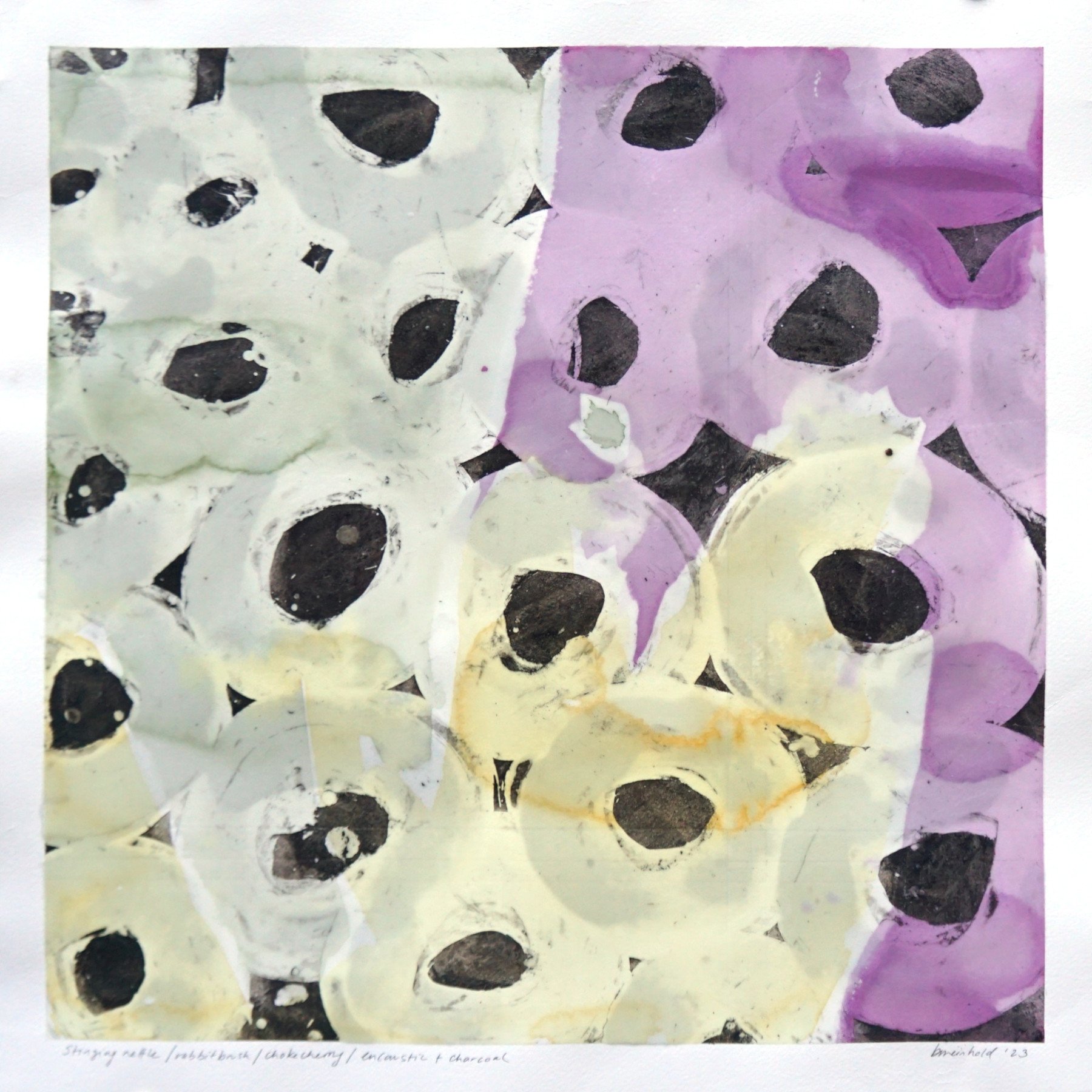
stinging nettle / rabbitbrush / chokecherry / encaustic + charcoal

chokecherry + copper + alum / coneflower + baking soda / encaustic + plaster
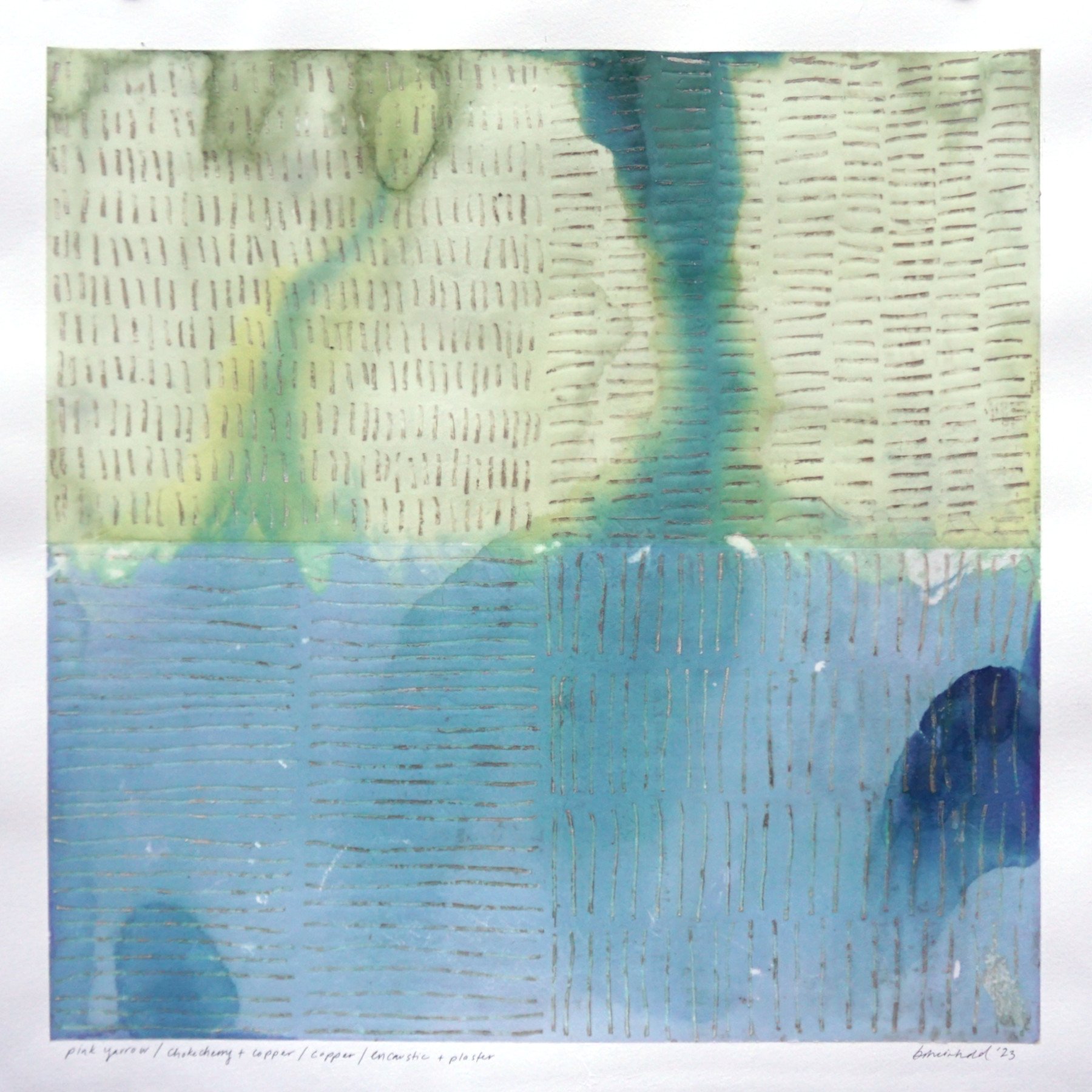
pink yarrow / chokecherry + copper / copper / encaustic + plaster
The Park City Preservation Planning Board sifted through all 21 paintings to decide which one best celebrated the preservation of the King Con Ore Bin. The painting will hang in City Hall in 2024.
Final Selection Painting
“Rabbit Brush + Alum /
Stinging Nettle /
Encaustic + Charcoal”
In November 2023, the Park City Historic Preservation Board selected this as the final painting. The name of the painting corresponds to the inks and materials used to create it. The frame is made by Matt Meinhold from reclaimed wood. The work will hang in City Hall starting in 2024.




